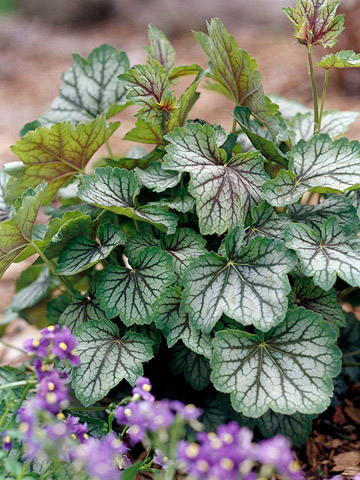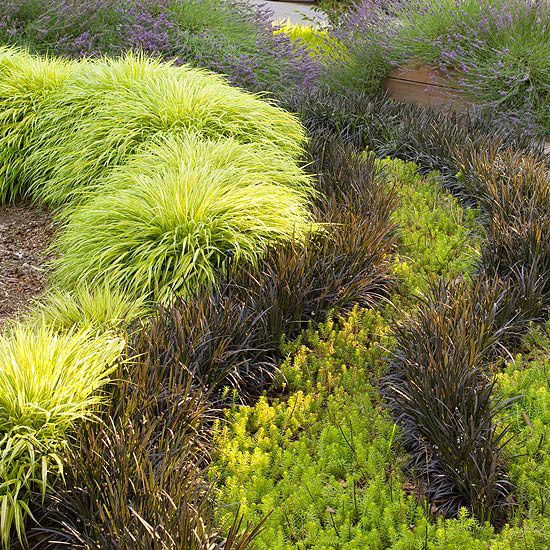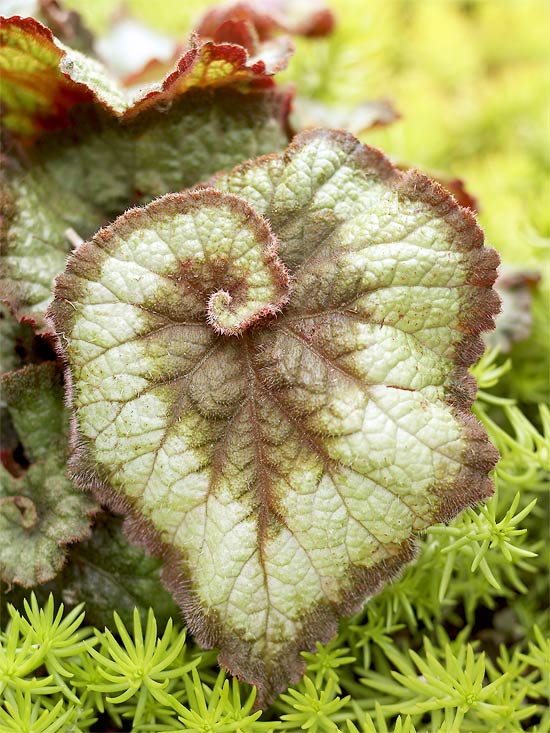






Foliage has the advantage of maintaining the look of a design throughout the season. Flowers, by contrast, can be fleeting, and therefore so is any plant combination that relies on them.
Striking form and color can be garden standouts, but to get the greatest impact you need to create contrast with surrounding plants. You still want to repeat plants throughout a garden to make it cohesive. But in individual groupings, opposites attract!
When shopping for plants, if you're not sure whether a particular pairing will look nice, remember the tried-and-true "shopping cart method"-- simply set plants next to each other in the shopping cart to see how they look. And don't overthink the process! Plants with distinctly different foliage colors almost always look nice together.
See our favorite plants for beautiful foliage.
continue reading below
The simplest and surest way to create pleasing contrast with foliage is to pair dark purple with light green or chartreuse. In fact, planting foliage of either color on its own simply doesn't do it justice. Together, however, each causes the other to stand out in a way that's hard to ignore. Both colors are common among ornamental varieties, so you should easily find them at most garden centers.
Large shrubs and trees are an exception to the contrast rule -- sort of. They DO look good in close combination with other plants, but they're large enough to plant alone and still provide a nice pop of color in your landscape.
See our favorite plants with chartreuse foliage and flowers.

Plants with large, distinctively shaped leaves or overall form stand out from more finely textured plants, and they look great alone, too. It may seem odd to think about contrasting textures and forms the same way you think about contrasting colors, but in the garden it works! Create nice visual diversity by pairing upright plants with arching or horizontal plants, for example, or large leaves against a backdrop of finely textured foliage.
A truly striking plant large enough to be seen from a distance is what designers refer to as a "specimen plant." This concept is slightly different but still useful to remember, because specimen plants are yet another way to provide garden bling without relying on flowers.
Click here to download a free PDF with a list and full-color photos of a few of Eric's favorite plants with dark and light foliage and great form.
Copyright © www.100flowers.win Botanic Garden All Rights Reserved